Tallinn, Estonia, was the first stop of our 30-day Baltic adventure. The taxi moved slowly through Old Town Tallinn’s narrow, twisting, cobblestone streets. We were astonished as we passed by medieval buildings, thick bastion walls, ancient defense towers, and centuries-old churches.
As the taxi parked in front of our hotel, we looked at each other and giggled. We would spend the next ten nights in a building that began life in 1437, exploring Old Town Tallinn and the modern city beyond the defense walls built in the 13th century.
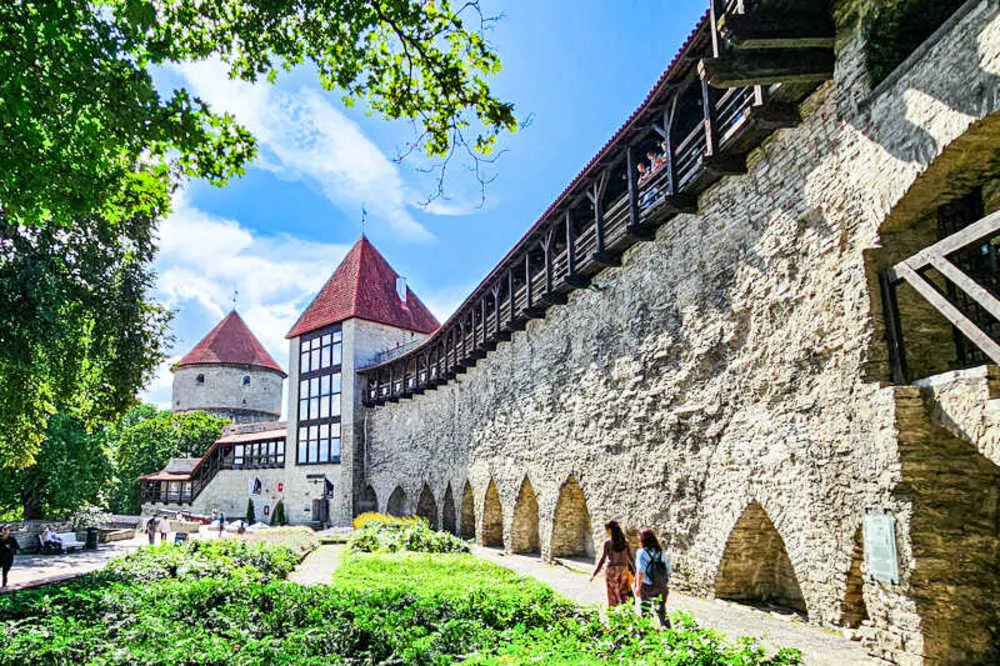
Three Popular Cities for Expats
Estonia has a population of 1,360,546 in 2024, a drop of 6.65% over the previous year. Over 60% of Estonians live in urban areas. These three cities range in population size and surrounding landscapes.
Tallinn

Tallinn is a remarkable destination for retiree expats for several reasons. Firstly, the city enjoys a rich historical and cultural heritage, with its well-preserved medieval Old Town and ancient defense structures. This provides expats with a unique living environment. Tallinn has the largest population in Estonia, with 440,950 residents.
Additionally, Tallinn offers a high standard of living at a relatively lower cost compared to the US and many other European cities. The city is also known for its efficient and modern infrastructure, including reliable public transportation and high-speed internet.
Furthermore, Tallinn is a safe and peaceful city with a welcoming and friendly local population. A thriving international community makes it easier for newcomers to integrate and feel at home in Tallinn. Overall, the combination of history, affordability, safety, and community makes Tallinn a good choice for expats looking to relocate.
Tartu
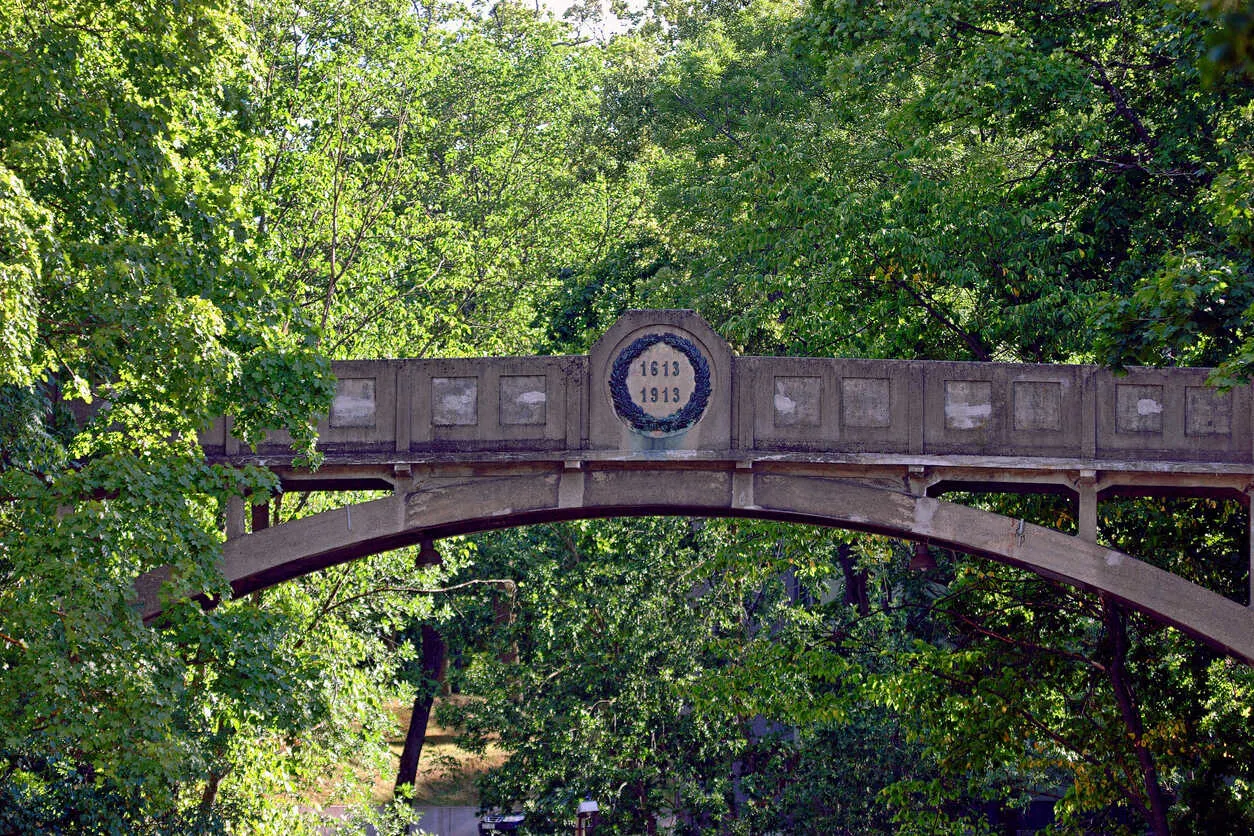
Tartu is a fantastic choice for retiree expats seeking a high quality of life in a vibrant and culturally rich city. As the second-largest city in Estonia, Tartu is a lovely blend of historic charm and modern amenities. The city is known for its university, the University of Tartu Pärnu College, which contributes to a lively and diverse atmosphere.
Retirees can benefit from the city’s lower cost of living compared to the US and other European cities. Tartu has a strong sense of community, making it easier for expats to integrate and feel at home.
With its beautiful parks, lovely sidewalk cafes, and a wide range of cultural events, Tartu offers a good life for expats of all ages. Whether you explore the rich history, enjoy the arts and music scene, or savor the laid-back ambiance, Tartu has a fulfilling lifestyle. Tartu’s population is 93,687.
Pärnu
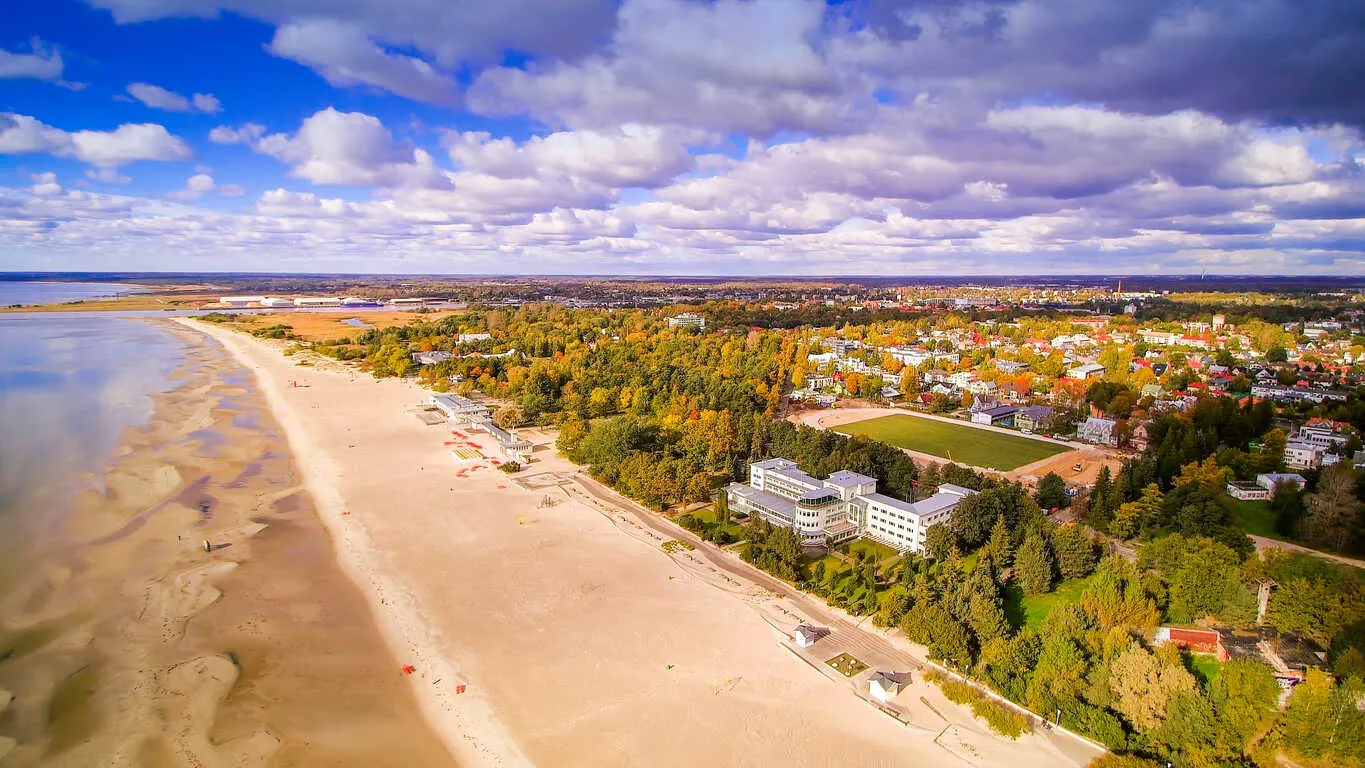
Pärnu, a charming coastal city in Estonia, is a perfect destination for retiree expats desiring a serene and laid-back life. Known for its beautiful beaches, relaxing spas, and peaceful ambiance, Pärnu is a retreat for those looking to retire in a tranquil setting.
The cost of living in the city is lower than that of the US and many other European cities. It’s an attractive option for expats. With its well-maintained parks, cultural events, and welcoming local community, retirees can easily integrate and feel at home in Pärnu.
The city’s rich history and picturesque surroundings are made for leisurely strolls and nature walks. You can relish the coastal beauty, indulge in spa treatments, or soak up the relaxed atmosphere. Pärnu offers an idyllic setting for expats looking to enjoy their retirement years. Pärnu’s population is 41,170.
How To Move Out of the U.S.
How To Move Out of the U.S.
The policy implications of the last election impacted your retirement funds, taxes, healthcare, and more. But you can protect yourself, your family, your future. In lots of safe, warm, friendly spots abroad, you can live comfortably on a budget from $2,000-$3,800 a month (all-in—housing and extras included). We’ll show you how—and where—to go.

By submitting your email address, you will receive a free subscription to IL Postcards, Overseas Dream Home, The Untourist Daily and special offers from International Living and our affiliates. You can unsubscribe at any time, and we encourage you to read more about our Privacy Policy.
Cost of Living
Average Living Expenses (US$):
| Expense | Cost |
| Monthly rent for a 900 sq ft furnished apartment in an expensive area | 1299 |
| Monthly rent for a 900 sq ft furnished apartment in an average area | 855 |
| Monthly utilities - water, electricity, and gas for two people in a 900 sq ft apartment | 287 |
| Monthly high-speed Internet | 45 |
| Monthly mobile phone – 4G network | 19 |
| Monthly public transit ticket | 33 |
| One liter gasoline (1/4 gallon) | 2 |
| Monthly groceries for two, 2400 calories per person per day | 556 |
| Entertainment for two (dining out, cinema, drinks, etc.) | 130 |
(All numbers are the average costs in Estonia, converted from Euro to USD at the exchange rate on 10/04/24 and rounded to the nearest dollar.)
Shopping

Shopping is one of our favorite scouting activities, especially in a grocery store or street market. We walk up and down the aisles, looking at sometimes baffling products. For example, we saw a can that read “Hallid Herned” without a photo of the contents. We each made a guess. Mary guessed coconut, and Kevin thought corned beef. After using Google Translate, we found out it was grey peas. That left us more confused than ever, so we bought a can. It turns out they are Latvian peas, similar to chickpeas.
Shopping in Estonia offers a wide variety of local and international products. From traditional handicrafts to modern fashion, Estonia’s shopping scene is diverse. You can explore lively markets, boutiques, and shopping centers where you will find Estonian delicacies, artisanal goods, and stylish clothing.
Taxes
Estonia operates on a flat tax system. Individuals and businesses are taxed at a flat rate of 20% for most types of income. This simple tax system has contributed to Estonia’s appeal as a destination for expats and entrepreneurs. Notably, Estonia does not impose corporate income tax on reinvested profits, encouraging business growth and investment.
The country also offers a competitive tax environment for startups and innovative enterprises, with various incentives and exemptions available. Its tax system is known for its simplicity, efficiency, and business-friendly approach, making it an attractive option for individuals and businesses seeking favorable tax conditions.
Transportation

Air
Air travel in Estonia offers connections to various European destinations. Tallinn Airport is the primary international gateway, with modern facilities and efficient services. Airlines like AirBaltic and others provide regular flights to European cities.
According to Booking.com, 22 airlines fly directly to Estonia from the US, with an average roundtrip ticket price of $865 and an average flight time of 13 hours.
Trains
Train travel in Estonia offers a convenient and scenic way to explore the country. The rail network connects major cities like Tallinn and Tartu. From major Estonian towns, you can connect to many European cities.
Bus
Bus travel in Estonia is a convenient and affordable way to explore the country. The buses are modern, comfortable, and well-maintained. With extensive routes connecting major cities and rural areas, traveling by bus provides an excellent opportunity to experience Estonia’s diverse regions. Connections to other European cities are available.
We loved the Lux Express buses. They offer two types of seats, some with extra legroom, reclining seats, and a video entertainment system in the seatback in front of you. The extra we paid was well worth it for two tall Americans.
Taxis
Taxi travel in Estonia is inexpensive and reliable. Taxis are readily available in cities like Tallinn. You can hail a cab or use ride-hailing apps to get around. BOLT might be your best choice since it was developed in Tallinn and covers most of Europe today.
Auto
Driving in Estonia is relatively straightforward, with well-maintained roads and clear signage. Speed limits are strictly enforced, and seat belts are mandatory for all passengers. It’s important to note that snow tires are a legal requirement during winter.
Owning a car in Estonia is relatively affordable compared to many other European countries. The cost of gasoline is lower than in the US. Additionally, registering a vehicle and obtaining insurance is straightforward and efficient.
Ferries
Ferry travel in Estonia is a convenient and scenic way to explore the country’s coastal beauty. Operating between the mainland and Estonia’s numerous islands and Finland, ferries provide comfortable amenities and lovely views of the Baltic Sea.
Cycling and Walking
Estonia offers excellent opportunities for cycling and walking enthusiasts. The country’s well-maintained cycling paths and nature trails make it a paradise for outdoor activities. Whether you want to explore the streets of Tallinn or venture into the serene countryside, Estonia’s diverse landscapes cater to all levels of cyclists and hikers.
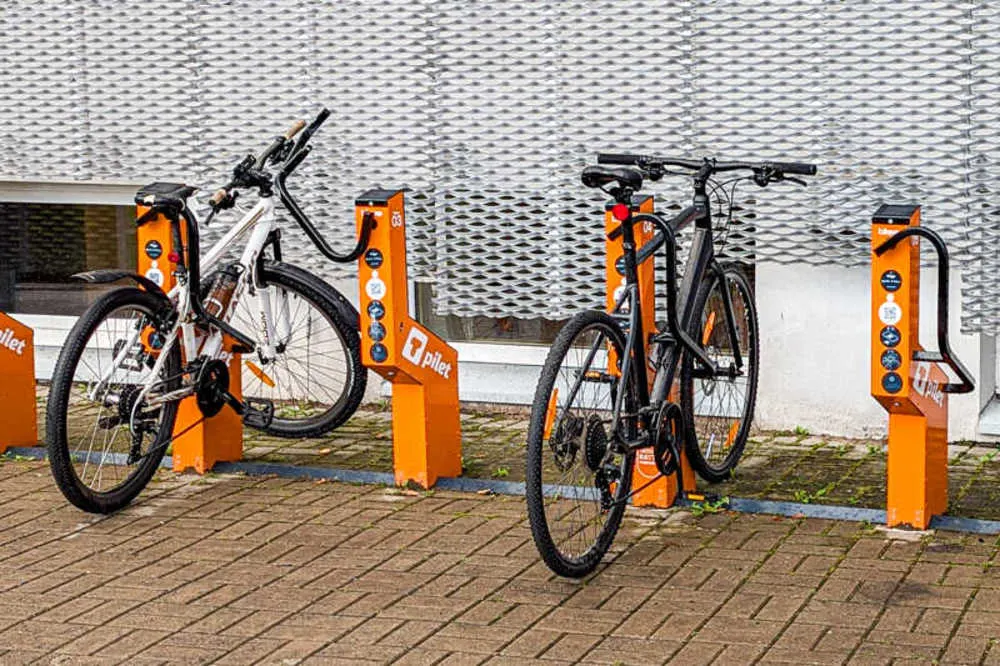
Location, History, and Culture
Estonia is in Northern Europe, bordered by the Gulf of Finland, the Baltic Sea, Latvia, and Russia. Its strategic position has historically made it a significant trade hub and influenced its diverse cultural heritage. The country’s northern latitude gives it long summer days and long winter nights.
The country's history is rich and varied, shaped by centuries of influences from different cultures and empires. The region has been inhabited since ancient times, with evidence of human settlement dating back to around 9000 BC.
Throughout its history, Estonia has been ruled by various powers, including the Danish, Swedish, German, and Russian empires. In 1918, Estonia declared independence, then was occupied by the Soviet Union and Nazi Germany during World War II. After the war, Estonia was forced into the Soviet Union and regained its independence in 1991.
This tumultuous history has contributed to Estonia’s unique cultural heritage, blending Nordic, Germanic, and Slavic influences. Today, Estonia is known for its vibrant folk traditions, medieval architecture, and innovative digital society.
Climate
Estonia has a temperate climate with four distinct seasons. Summers are mild and warm, with average temperatures around 68 F. Winters are cold, with temperatures often dropping below freezing, and snow is common. Spring and autumn are transitional seasons, with varying temperatures and moderate rainfall. Estonia’s climate offers a mix of seasonal experiences, appealing to those who enjoy distinct weather patterns throughout the year.
Language
Estonian is the native language of Estonia, with English following close behind. Most Estonians, especially the younger generation, speak some English. We found most menus and business signs in English.
The Estonian language is a unique part of Estonia’s cultural identity. It is a Finno-Ugric language closely related to Finnish and distantly to Hungarian. Estonian is known for its 14 grammatical cases, which can be challenging for language learners.
Despite being a small language with around 1.1 million speakers, Estonian has a rich literary tradition, with a wealth of poetry and folklore. The language incorporates phonetic spelling, meaning words are pronounced as they are spelled. Estonian is an essential part of Estonia’s national pride and heritage.
The Estonian People
The people of Estonia are warm, hospitable, and friendly. They take pride in their rich cultural heritage and are eager to share their traditions. While Estonians are generally polite and reserved, they value their personal space.
Estonians have a strong sense of community and are open to embracing diversity, making it easier for expats to integrate and feel at home. Estonia’s welcoming and inclusive atmosphere helps newcomers quickly find their place in society.
How To Move Out of the U.S.
How To Move Out of the U.S.
The policy implications of the last election impacted your retirement funds, taxes, healthcare, and more. But you can protect yourself, your family, your future. In lots of safe, warm, friendly spots abroad, you can live comfortably on a budget from $2,000-$3,800 a month (all-in—housing and extras included). We’ll show you how—and where—to go.

By submitting your email address, you will receive a free subscription to IL Postcards, Overseas Dream Home, The Untourist Daily and special offers from International Living and our affiliates. You can unsubscribe at any time, and we encourage you to read more about our Privacy Policy.
Food & Drink
Estonian cuisine is a delicious blend of traditional flavors and influences from neighboring countries. One of the most iconic dishes is mulgikapsad, a hearty stew made with pork, sauerkraut, and barley. Another popular dish is karask, a rustic bread made from barley or rye flour, often served with butter and cheese. For seafood enthusiasts, kiluvoileib, featuring smoked sprats on rye bread with boiled egg and fresh cucumber, is a favorite.
Kama, a traditional Estonian dessert made from a mixture of finely milled grains such as barley, rye, oat, and pea, is a unique and tasty treat. Estonian cuisine celebrates fresh, seasonal ingredients and offers a range of flavors.
We found restaurants and cafes serving culturally diverse food. We ate in an Irish pub, an Indian restaurant, an Italian trattoria, and a Georgian café, in addition to traditional Estonian and even American eateries.
Estonia has a rich beer and wine culture. Beer is widely consumed and enjoyed, with various local craft breweries offering unique and flavorful brews.
The country also has a growing wine scene, focusing on producing quality wines from local fruits such as apples and berries. Visitors can explore cozy pubs and wine bars to experience the diverse and evolving beer and wine culture.
Estonia is known for its traditional liquor called Vana Tallinn, a spiced rum-based liqueur with flavors of cinnamon, vanilla, citrus, and other secret ingredients. It is often enjoyed neat, on the rocks, or in cocktails. We tried it as a nightcap on the rocks—it was excellent!
Entertainment and Things to Do
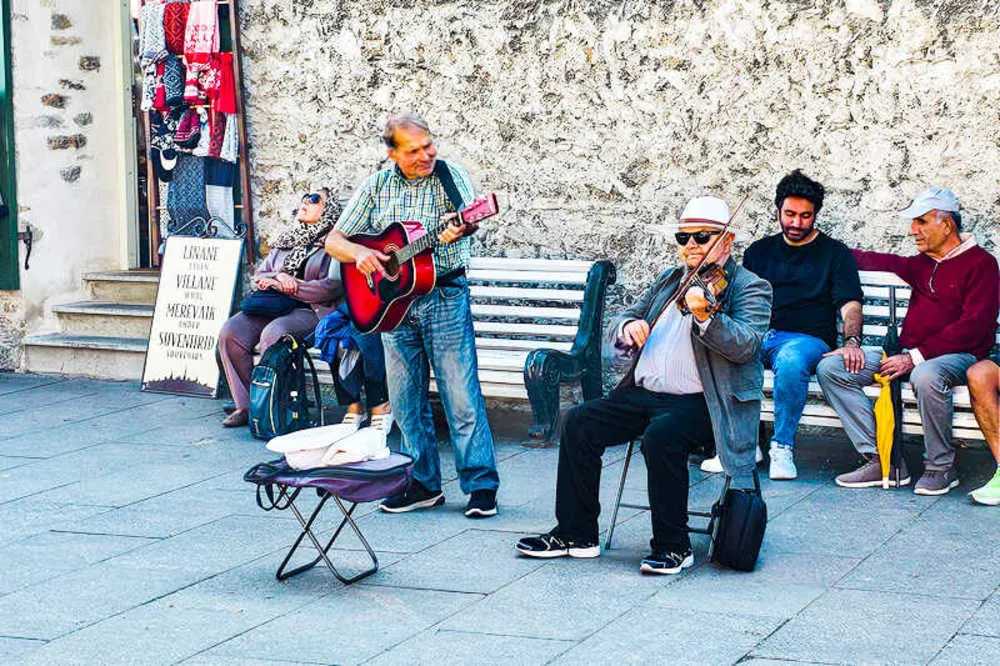
Estonia offers many forms of entertainment and activities for all interests. In Tallinn, visitors can explore the well-preserved medieval Old Town, a UNESCO Historic Center, visit art galleries and museums, and enjoy the energetic nightlife with its bars and live music venues. The city also hosts various cultural events and festivals annually, showcasing traditional music, dance, and local cuisine.
For nature enthusiasts, Estonia’s countryside is a paradise for outdoor activities like hiking, birdwatching, and wildlife photography. Lahemaa National Park, near Tallinn, is a delight for nature lovers, with its coastal landscapes and wildlife.
Additionally, Estonia is known for its musical heritage. You can experience traditional folk music performances and modern concerts featuring local and international artists.
For those interested in wellness and relaxation, Estonia offers numerous spa resorts and wellness centers, providing rejuvenating treatments and therapies. Saunas are also a popular and integral part of the local culture.
Residency, Visas, Etc.
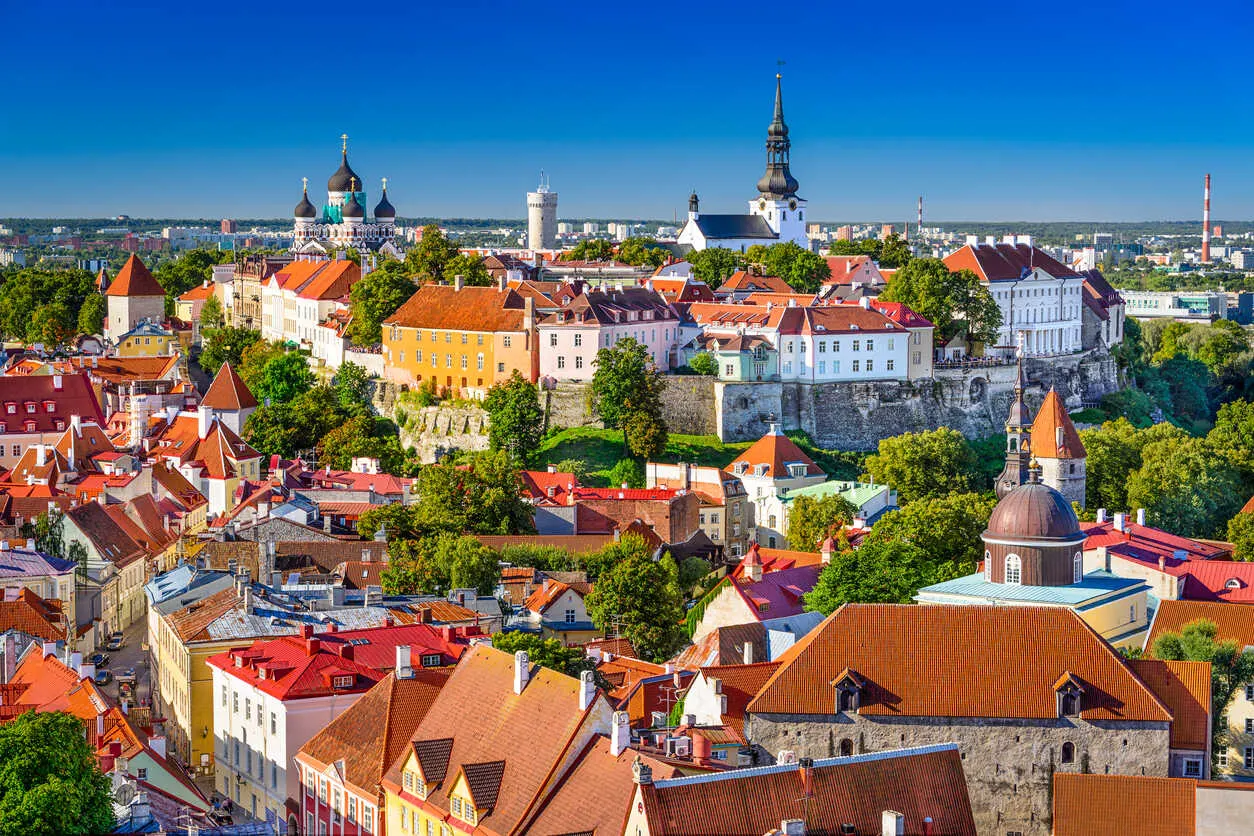
You can enter Estonia with a valid passport; a visa is unnecessary for stays up to 90 days within the previous 180 days, as Estonia is part of the Schengen Area. To stay longer, you’ll need to apply for one of the other visa and residency types.
Estonia offers several options for residency visas, making it an attractive choice for expats looking to relocate. The e-Residency program allows individuals to establish and manage an EU-based company online, ideal for entrepreneurs and digital nomads.
For those looking to retire, there is no specific retirement visa for non-EU nationals. Instead, you’ll need to apply for a tourist visa and then a temporary residence permit. The long-stay (D) visa allows retirees to live in Estonia for up to a year. It suits individuals with a stable income to support themselves during their stay.
For those working remotely, Estonia offers a Digital Nomad visa, allowing individuals to live in Estonia while working for their own company or a company not registered in Estonia.
Healthcare
Expats in Estonia can access the country’s public healthcare system by registering with the Estonian Health Insurance Fund (EHIF). This covers essential medical services, including doctor visits, hospital care, and prescription medications. Many of these services are free or very low cost. Additionally, expats can opt for private health insurance to supplement their healthcare needs and access a broader range of medical facilities.
Estonia’s urban areas have modern hospitals and clinics that provide quality healthcare services. English-speaking medical professionals are also available, making it easier for expats to communicate their healthcare needs.
10 Reasons to Retire in Estonia
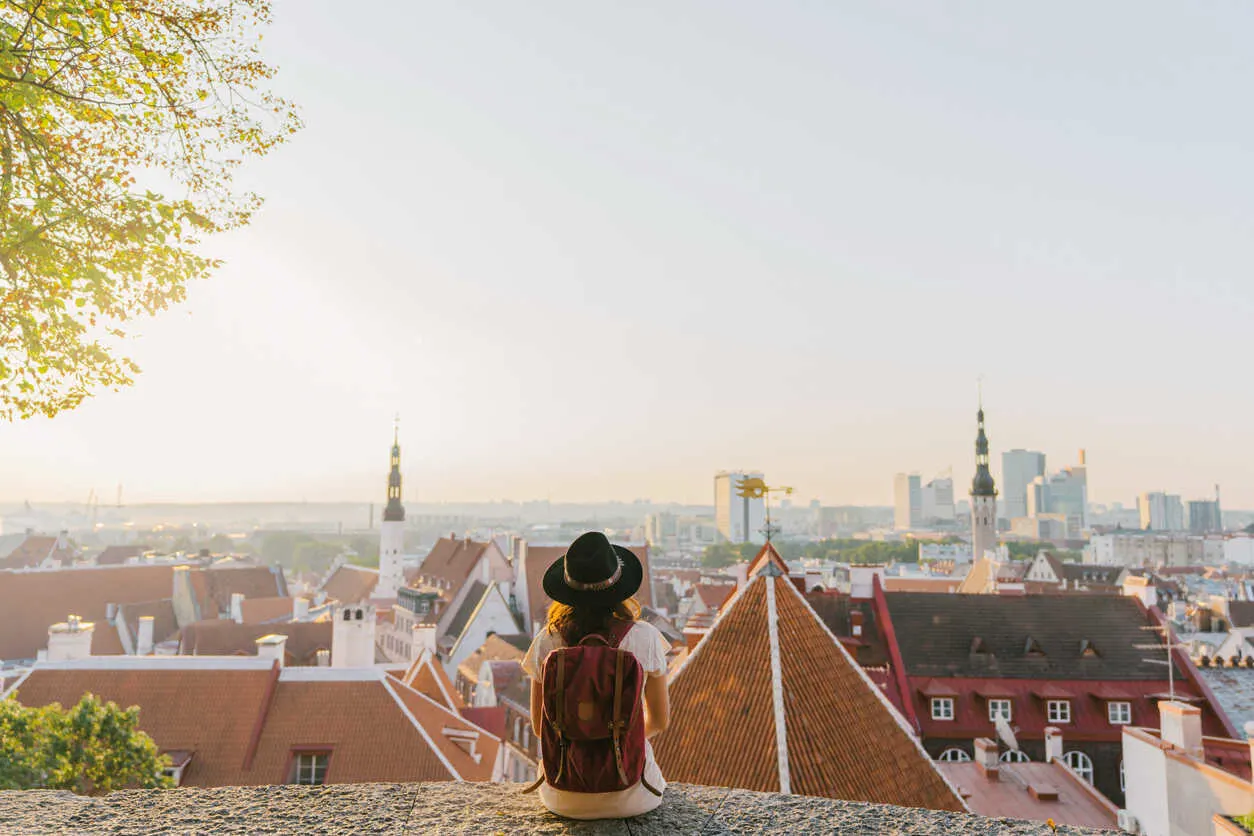
Low cost of living: On average, 24% lower than the US, with rent being 66% lower than the US.
English is widely spoken: 54% of Estonians speak English; 78% speak a foreign language other than Estonian or English.
Warm and welcoming locals: A diverse international culture that embraces newcomers.
Access to essential medical care at low or no cost: Modern hospitals and clinics are available in urban areas.
Resident visas for various situations: Options include student, work, long-term residency, and Digital Nomad visas.
Simple flat tax rate: Individuals and businesses are taxed at a flat 20% rate, with a ‘no double tax’ agreement with the US.
Rich and varied history: Estonia preserves its history and culture from medieval times to the present.
Activities for all interests: From opera to rock, ballet to folk dance, spas to nature, and fine art to street art.
Protected natural landscapes: Over 50% of Estonia is forested, offering different landscapes throughout the year.
Easy, low-cost travel to Europe: Quick and inexpensive access to European destinations by plane, train, bus, ferry, or car.
These reasons collectively make Estonia an attractive and welcoming destination for retirees seeking a fulfilling and comfortable retirement lifestyle.
Conclusion
We were impressed with Estonia’s openness to new residents from around the world. We were especially touched by the country’s strong support for Ukrainians, evidenced by the ubiquitous presence of the Ukrainian flag alongside the Estonian flag.
During our time in Estonia, we met both locals and expats who were curious about Americans and eager to share their stories. Many expats had found new passions in retirement, from writing and painting to joining social groups like salsa dancing.
Estonia offers expats a chance to live comfortably, make new friends, immerse themselves in a new culture, and even tackle the challenging Estonian language. With assured healthcare and a manageable tax burden, the country provides a unique and appealing environment for retirees.
If Estonia intrigues you, book a flight and a vacation rental to try out living like a local.
How To Move Out of the U.S.
How To Move Out of the U.S.
The policy implications of the last election impacted your retirement funds, taxes, healthcare, and more. But you can protect yourself, your family, your future. In lots of safe, warm, friendly spots abroad, you can live comfortably on a budget from $2,000-$3,800 a month (all-in—housing and extras included). We’ll show you how—and where—to go.

By submitting your email address, you will receive a free subscription to IL Postcards, Overseas Dream Home, The Untourist Daily and special offers from International Living and our affiliates. You can unsubscribe at any time, and we encourage you to read more about our Privacy Policy.
